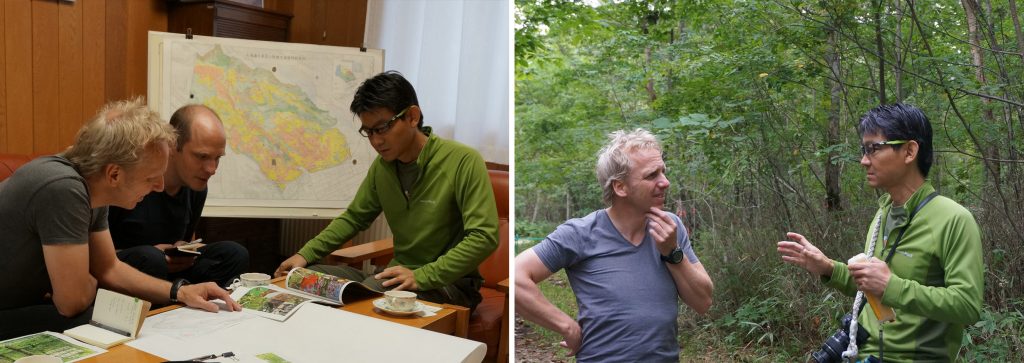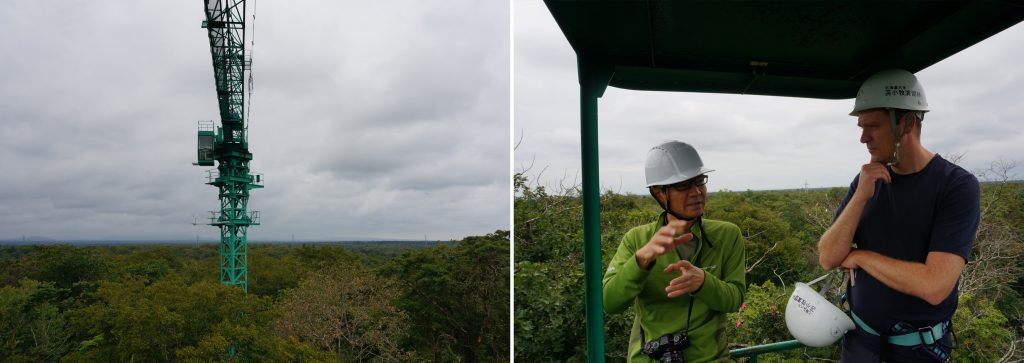Exploring northern forests
University News | September 21, 2016
A journalist and a photographer from the Netherlands visited Hokkaido University’s experimental forests in Tomakomai and Teshio from September 14–19 as part of their “Borealis Project,” in which they explore boreal forests around the world and assemble their work into newspaper articles, a book and an exhibition.
“Through this project, I want to learn how people have lived with the forests and how that relationship will be in the future,” said journalist Jelle Brandt Corstius. Meanwhile, photographer Jeroen Toirkens noted, “Forests can be scary places for humans, but at the same time, forests have been places of protection and resources.”

| (Left) Dr.Hiura introducing the Tomakomai Expmerimental Forest to the journalist Corstius and the photographer Toirkens in his room. (Right) Dr.Hiura and the Toirkens talking in the forest. |
Dr. Tsutom Hiura, director of the Tomakomai experimental forest, guided them into the forest, which he calls “a laboratory,” and explained some ongoing experiments. In one area, the ground was warmed up using heated cables to observe how higher temperatures affect the physiology of trees and the ecosystem. “We have been monitoring for eight years and have detected some interesting differences,” said Dr. Hiura. “It has changed the insect population in the area, and the nutrient release from the soil has decreased. This kind of experiment may help predict the effect of global warming in the future.”

| (Left) The crane which lifts up the observation gondola up to 25 meters high. (Right) Dr.Hiura and Corstius in the gondola. |
The group then boarded an observation gondola—a well-known symbol of the experimental forest—which can be lifted as high as 25 meters by a crane. Toirkens was meticulous when taking photographs from unusual angles, such as from above the trees, using a film camera. “You cannot take as many photos as you can with a digital camera,” said Toirkens. “So I need to concentrate and spend more time thinking about what I really want to capture before pressing the button, which I really like.” While photographing, Corstius asked Dr. Hiura a simple question: “Why do you like trees rather than animals?” The answer was equally simple: “Because they are bigger, and I believe they have bigger influence on us and the entire ecosystem”.
Corstius and Toirkens plan to visit boreal forests in Alaska, Russia and Lithuania, as they continue their journey over the next four years.
Contact:
Naoki Namba (Media Officer)
Global Relations Office
Office of International Affairs
Hokkaido University
pr[at]oia.hokudai.ac.jp
Tel: +81-11-706-8034
